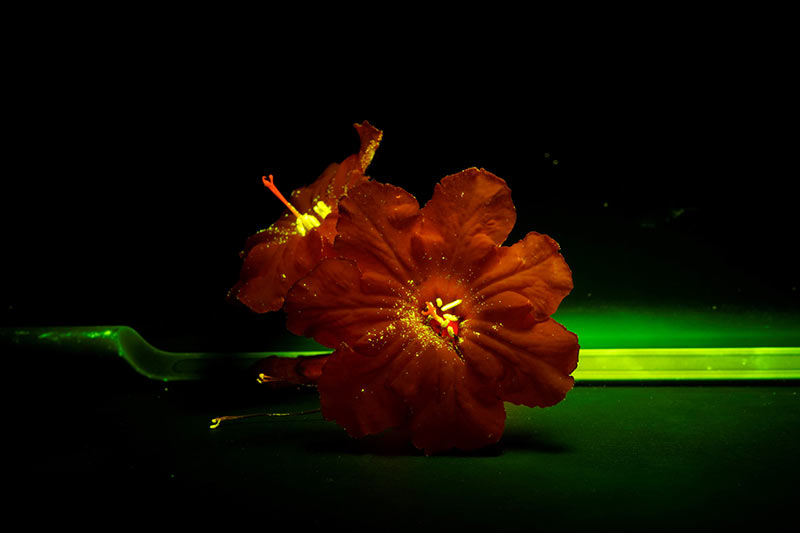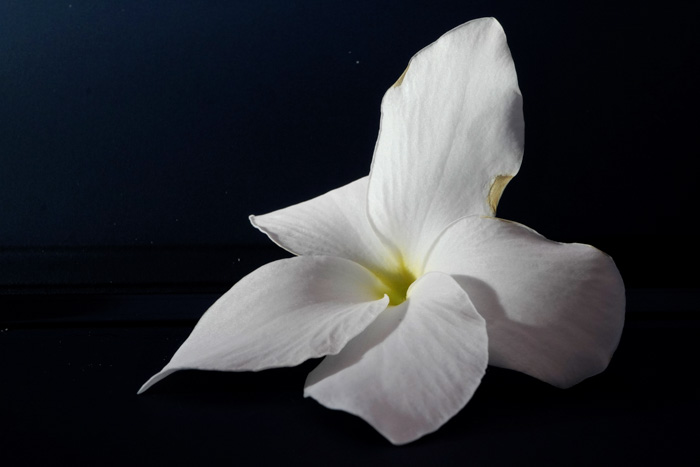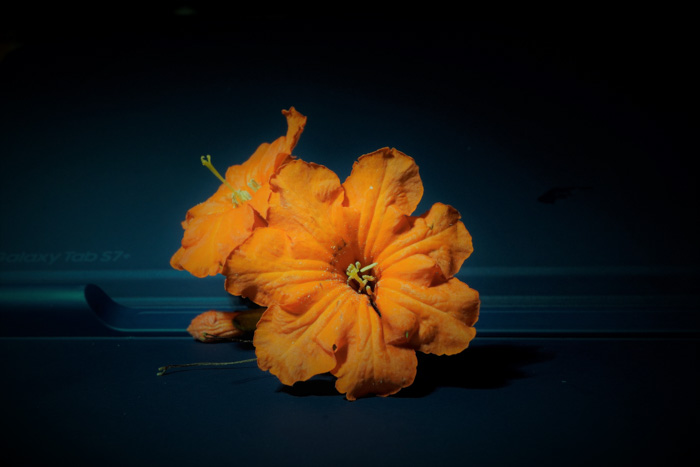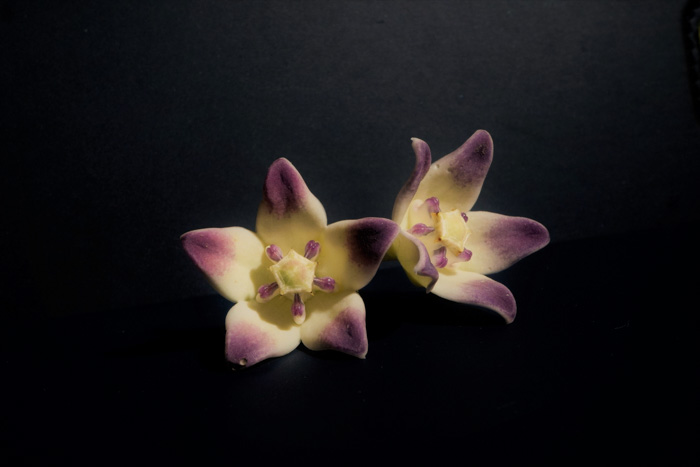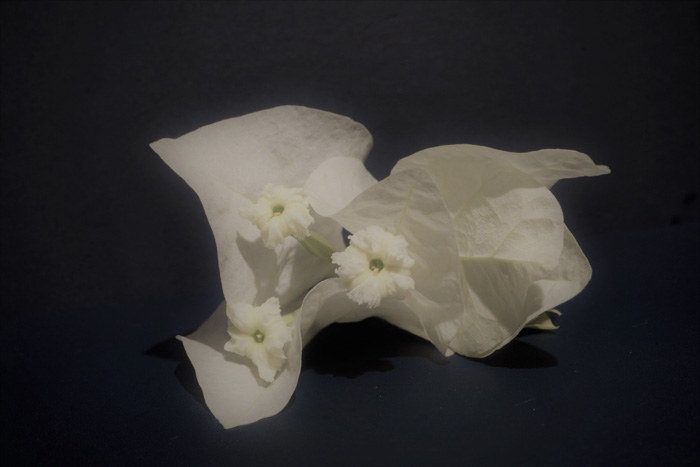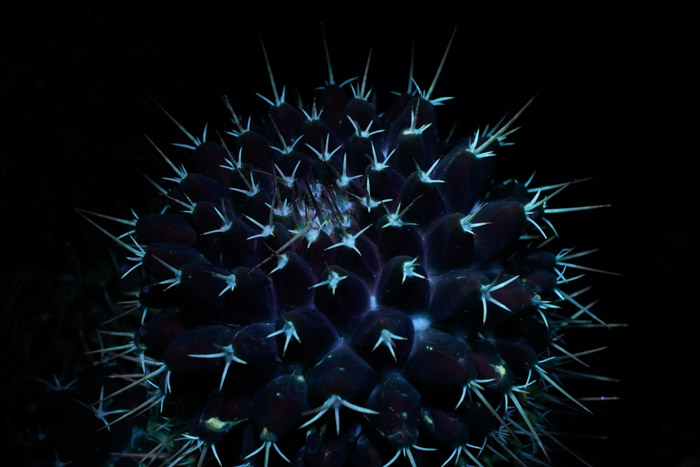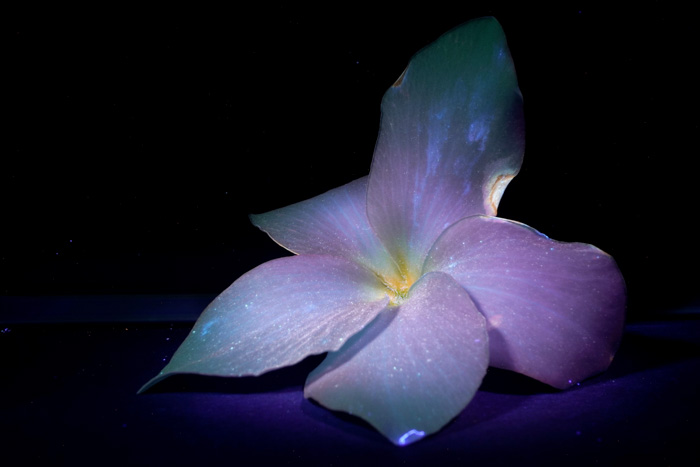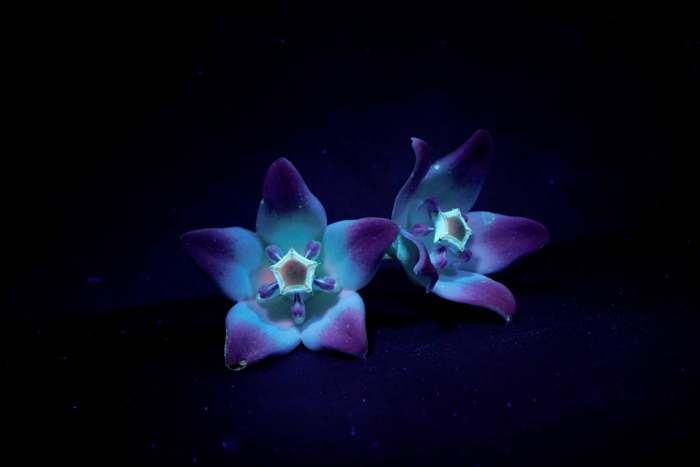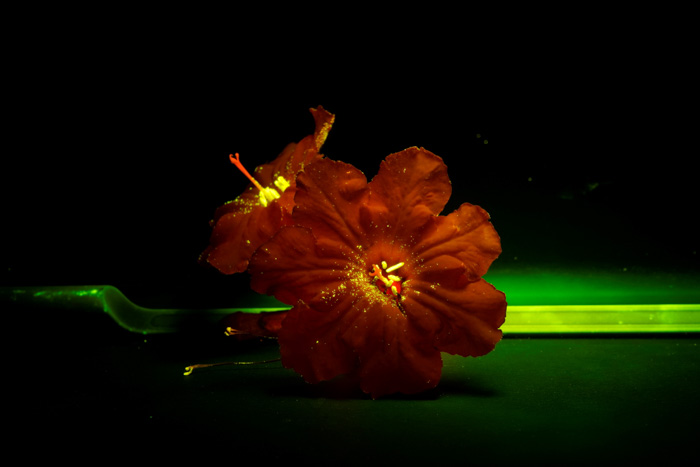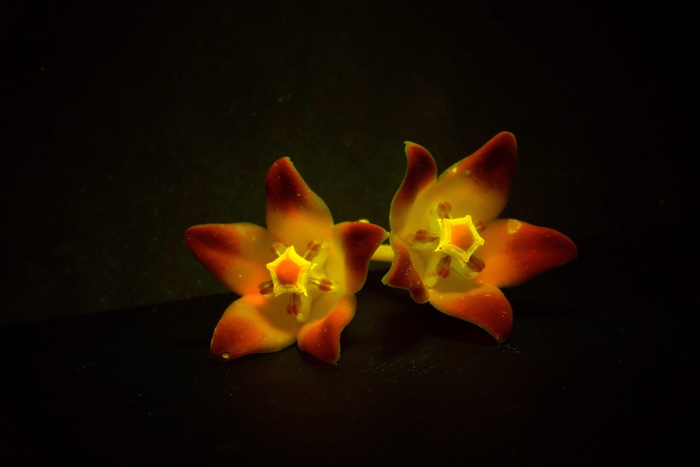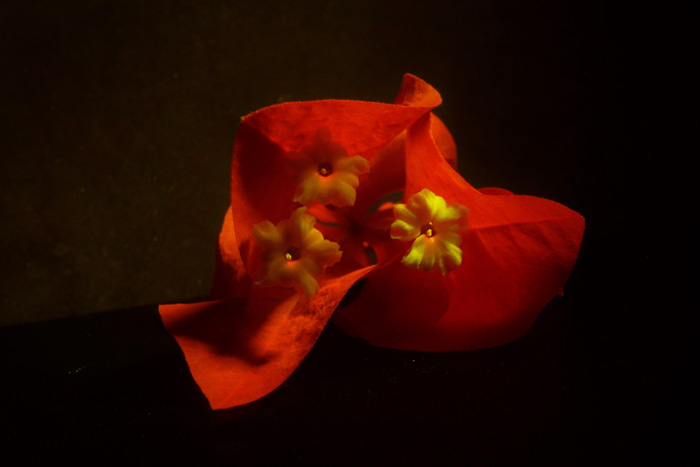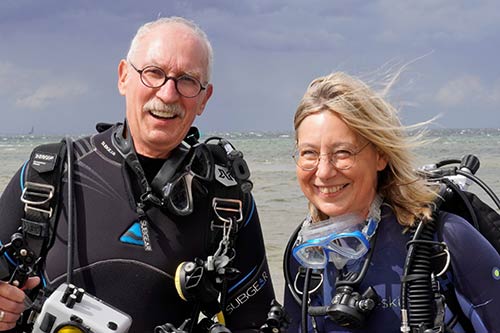Meet Dr. Ruth Winters (biologist) and Mr. Michel Pirotton (oceanographer).
I had the good fortune to meet Dr. Ruth Winters and Mr. Michel Pirotton in late 2021 when we enjoyed a birdwatching tour together. What I didn’t know at the time is that this chance meeting would ignite a new photographic interest for me! Bonaire Insider readers know by now that I have always had a keen interest in anything related to nature and science, and also anything to do with photography, but put the two of them together, and I admit I am hooked. And so, I simply must share with you my latest passion, which is Bonaire fluorescence photography.
Ruth and Michel began their journey into fluorescence photography while traveling for diving vacations. However, when the duo couldn’t travel to dive because of COVID-19, they instead went on garden “safaris” with their blue dive lights, because one can also observe biofluorescence outside the oceans. Plants can also transform the blue range of light into bright colors. For example, the chlorophyll in the green leaves fluoresces red when exposed to blue light.
Exactly what is fluorescence?
Many visitors to Bonaire are divers, and they are well acquainted with the Ostracod phenomenon, which is a classic example of bioluminescence–the biochemical emission of light by living organisms. But today, we are not referencing bioluminescence, but instead, biofluorescence, which is not a chemical reaction at all, but the phenomenon by which an organism absorbs blue light (450-465 nm), or ultra-violet light (365 nm), and emits the light back as a different color, usually red, orange, yellow, or green.
Ruth and Michel first searched for fluorescence with marine organisms (just wait until Part 2 of this story!), but they have recently experimented with plants on good ol’ terra firma as well. The results? Well, they are simply stunning, as you shall see!
Why do living organisms, plants or animals, use fluorescence?
It can be hard to wrap our minds around, but there are whole worlds out there that we, as humans, cannot see, smell, or hear. But just because our senses do not allow us to comprehend these marvels, it doesn’t mean that many of the world’s flora and fauna cannot. In fact, it’s just the opposite! With all the millions of invertebrates around the world, not to mention plant species, it’s no wonder that these organisms have evolved adaptations to better inhabit their own secret worlds.
Luring, warning, deceiving, or camouflaging are all reasons to use fluorescence.
Why use fluorescence? It’s now thought that one important use is for communication and this can encompass many strategies: attracting a mate, advertising a “stay away” warning, or even issuing an invitation–imagine the flower inviting the bee to come and pollinate it. There are so many possibilities, that the mind is simply boggled. And just think–we humans are only beginning to research fluorescence and all it can be!
Diurnal birds, for example, can see what we humans see–blues, greens, and reds–but they are also able to view ultra-violet light, allowing them to spot prey against a uniform background of a grassy field or a leafy forest floor. They actually experience color in an entirely different manner and intensity.
As another example, flowers will want to attract potential pollinators to just the right part of the flower (the stamen) so that the visiting insect will be sure to pick up pollen, while it is collecting nectar. Then, this insect will visit another flower and leave its pollen, thus completing the pollination cycle.
Flowers and cacti fluoresce as well.
Then Ruth and Michel started trying to illuminate the flowers with a UV light of 365 nm. They were surprised and impressed by the different fluorescence results between UV and blue light, which proved to be totally different. And so it happened that Ruth and Michel begin to photograph the plants with normal white light, blue light (with a yellow filter), and UV light. They were fascinated by the aesthetics that are otherwise hidden and that are made visible with the photographic methods.
The color of a flower is the summary result of various biochemical and physical reactions to the irradiated light and depends on the viewer’s ability to perceive certain wavelengths. With Ruth and Michel’s images, noted below, one can get an idea of how differently an insect may see a flower with its receptors for UV, blue, or yellow light. However, the insects or pollinators have different color receptors in their eyes than we humans have, so they will see the colors of the flowers differently and the fluorescing parts most likely in greater intensity than we can observe.
Gallery of Fluorescence Photography for Bonaire plant life.
Click on any image to view it in a larger format.
Warning–working with UV light during fluorescence photography can be harmful to your eyes and skin.
Be sure to take the proper precautions when working with UV light. With UV light, no filter is necessary, because–in contrast to insects and birds–you cannot see the irradiated UV light, so it doesn’t disturb us observing the fluorescence. However, the radiation can damage our eyes and skin. Most contact lenses and glasses do have UV protection built-in, but be sure to check that you have protection. So, it’s best to wear UV goggles to be sure your eyes are safe. Also, keep your skin covered when working with UV light.
Just wait until you see what blue light does underwater!
In Part Two, which is coming soon, we will follow Ruth and Michel underwater to see how Bonaire’s amazing underwater marine life fluoresces under blue light. Stay tuned for some unbelievable images!
About Dr. Ruth Winters and Mr. Michel Pirotton.
Michel Pirotton, oceanographer, software developer, and IT architect.
Dr. Ruth Winters, graduate biologist and expert for IT quality and process management.
“My interest in photography and my love of experimentation always lead us to new adventures that we capture in pictures.”- Michel Pirotton
Michel studied and was trained in physical oceanography, but he also moved into software development, which put him in contact with Ruth. They found a like interest, not only in science, but in each other, and they were married two years ago.
“Since my childhood, I have been fascinated by the underwater world and for several years I have been immersing myself in the diversity of life there.” – Ruth Winters
Dr. Ruth Winters began her scientific career studying the circadian rhythms of plants. Later she moved into software development, doing quality and process management, but now she stopped working and has returned to her original interest and training, as a biologist.
Learn more about the process behind Fluorescence Photography.
To view more of Ruth and Michel’s fluorescence photography, or to learn more about the process, visit their website.
(Source: Dr. Ruth Winters (biologist) and Mr. Michel Pirotton (oceanographer))

